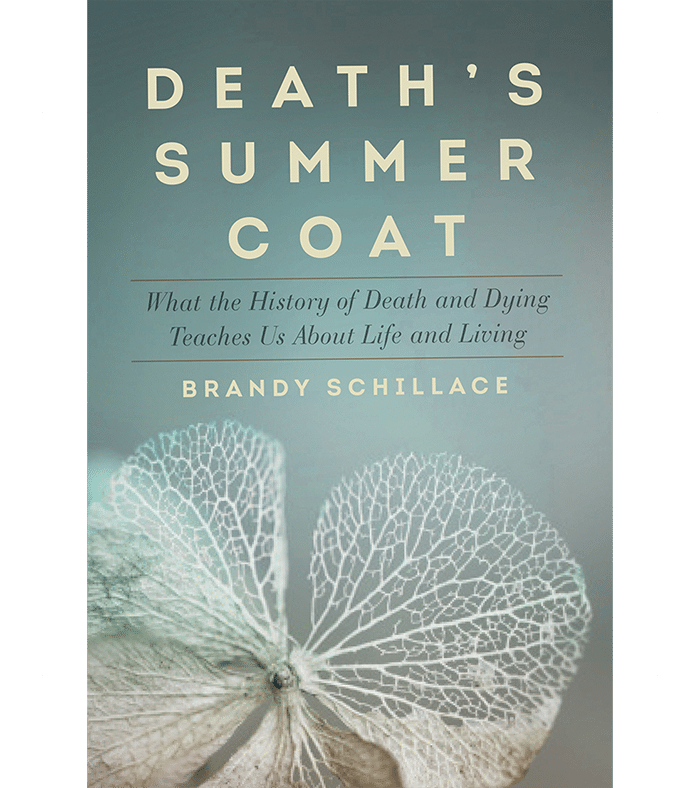Book Review: Brandy Schillace Death’s Summer Coat
/Why are we so afraid of death? It wasn’t always so. In Death’s Summer Coat: What the History of Death and Dying Teaches Us about Life and Living, Dr. Brandy Schillace explores how our society has sanitized death and made it foreign and unfamiliar. Schillace presents a wide array of research on both present day and historical death practices. Schillace looks at cultures with rituals and practices that might seem taboo and distasteful to many, but these rituals are practical and helpful for the living and the dying.
Using research from a journal article on PTSD Schillace found that in Cambodia, during the horrific Pol Pot regime, Cambodians were denied their usual outlets for grief. Schillace writes, “it was rare that relatives could find their deceased loved ones among so many dead…[and] when they could locate them, they were prohibited from performind traditional mortuary rituals because Pol Pot banned religious practice.”(31) Having lost their grief culture, Cambodians created a new ritual called chaa bangsegoul. At the temple, urns are brought out and placed on a table. Participants can “bring a picture of the dead or conjure them in their minds.” Monks spend three hours chanting, then anoint the urns with water blessing all the deceased represented in the ceremony. Cambodians changed their culture, creating a new ritual to help them heal and grieve over such a devastating loss.
Schlillace connects this to a study done on a shelter for abused women in Montana. “Despite extensive counselling, the women frequently found themselves returning to their abusers or moving on to new partners who were similarly abusive.”(41) The shelter psychologists decided to create a new ritual into the therapy. Women were invited to write down the weaknesses of their “old selves” and then drop these into the river. By letting go their trauma in ritual, they were able to heal and move on with their lives.
Using a text on World Religions, Schlillace writes about the Tibetan Buddhists practice of “sky burial.” (45) The centuries old tradition requires monks to ritualistically dissect the dead into small piece and feeding the remains to vultures. This tradition may seem abhorrent to us but it serves a practice concern of how to remove “a body in the cold, tree-less mountains.” (46) The body is broken down for “easier consumption by the birds.” Their lives continued by the person’s flesh and blood. Nothing is wasted. The soul can now move on to be reborn.
Using an anthropological text, Schlillace tells of the Wari people of the Brazilian rainforests who eat their dead. The practice is meant to literally consume the grief. “This practice symbolized their deep respect and honor of their loved ones—but also allowed them to deal with the loss.”(55) Only relatives consume the body which is roasted. The elders who perform the ritually explain “that only cutting of the body is emotionally difficult—to eat the remains, on the other hand, is good and right.” (56)
Schlillace contends that all of these seem unusual to western thought only because they are unfamiliar. That many of our own death practices, such as organ donation and viewing, mutilate the body in equal manners. She asserts that these rituals are a way “of keeping the dead near you.” (57)
In a fascinating self-contained chapter, Schlillace writes of the Victorian death culture. Grief became public. When Prince Albert died, Queen Victorian wore black for the rest of her life. Women followed suit and death became a trade. The 19th century saw a rise in developed cemeteries, custom coffins, jewelry made of the deceased’s hair, memento mori photography and complex clothing for mourners.
Is our sanitation of death a consequence of this monetization of death? Schlillace doesn’t really answer the question I came to the book asking. I wanted to see what type of texts she took her research from. They include scholarly journal studies, anthropology and religion textbooks as well as internet articles. She also weaves her personal story of losing her grandparents and the rituals her family used to grieve.
Her writing style is clunky. She is a scholar but seems to want to make the information accessible to regular people. As a result, she writes as if her reader is dense, often writing statements like “I began this chapter” or “Like I mentioned in chapter 3.” Despite this, I would recommend this book as a good survey of death practices.

